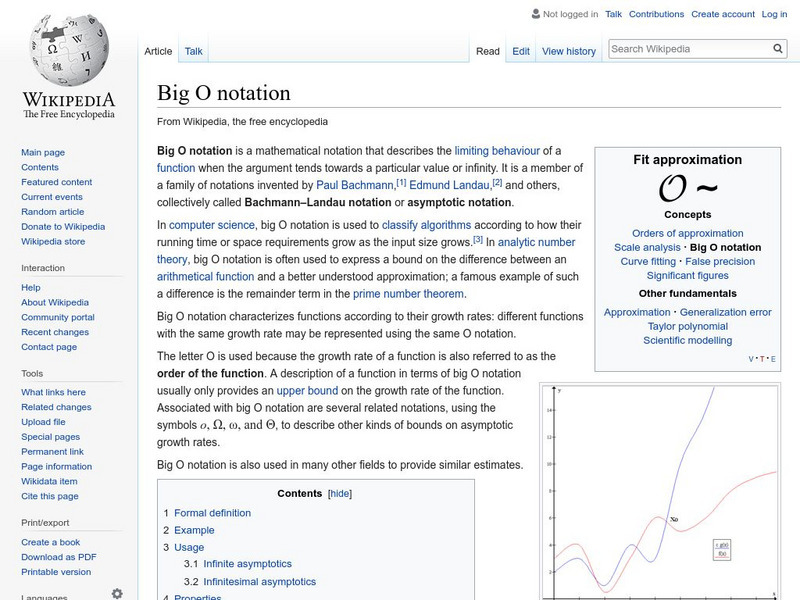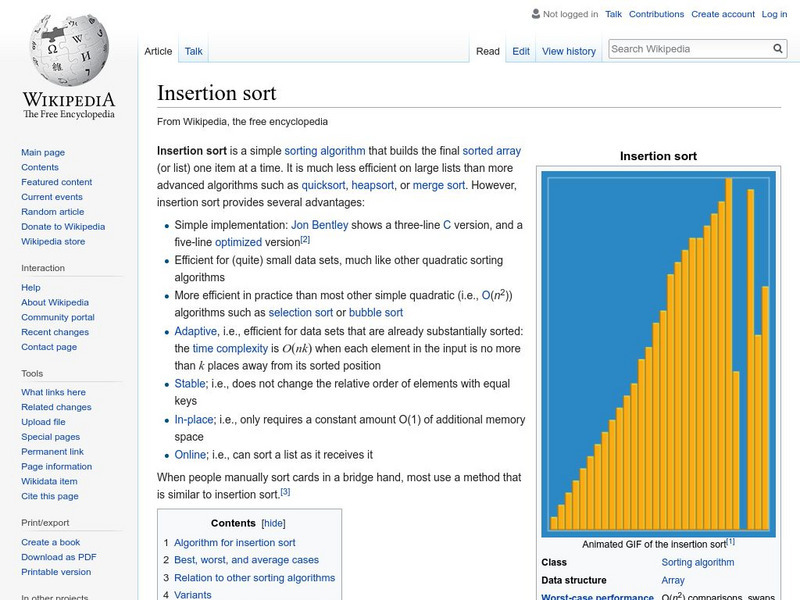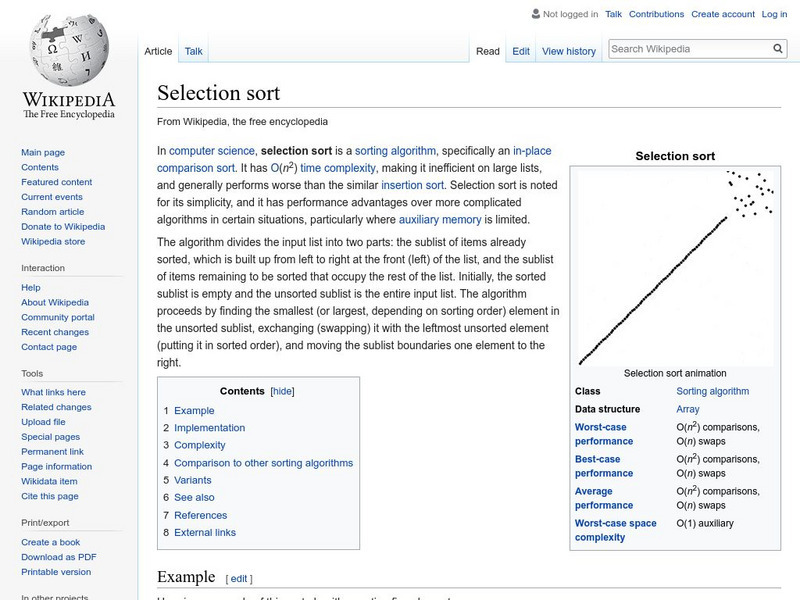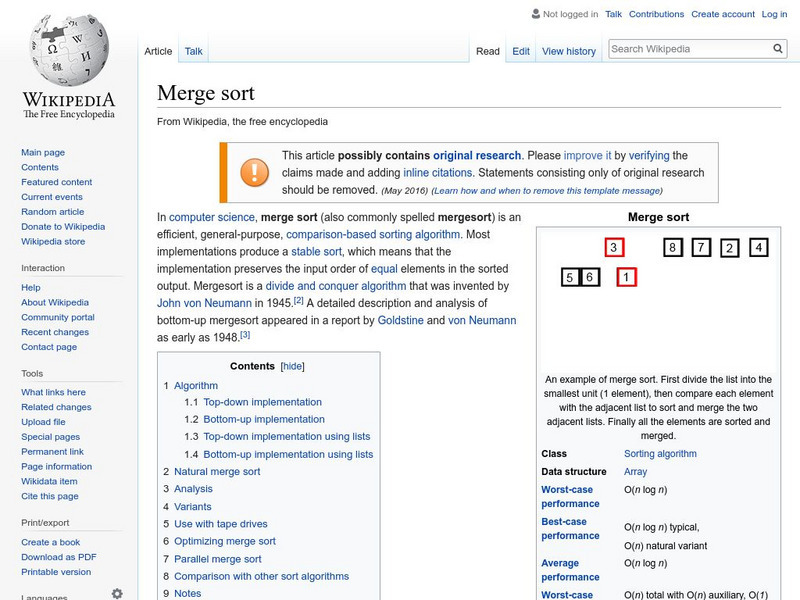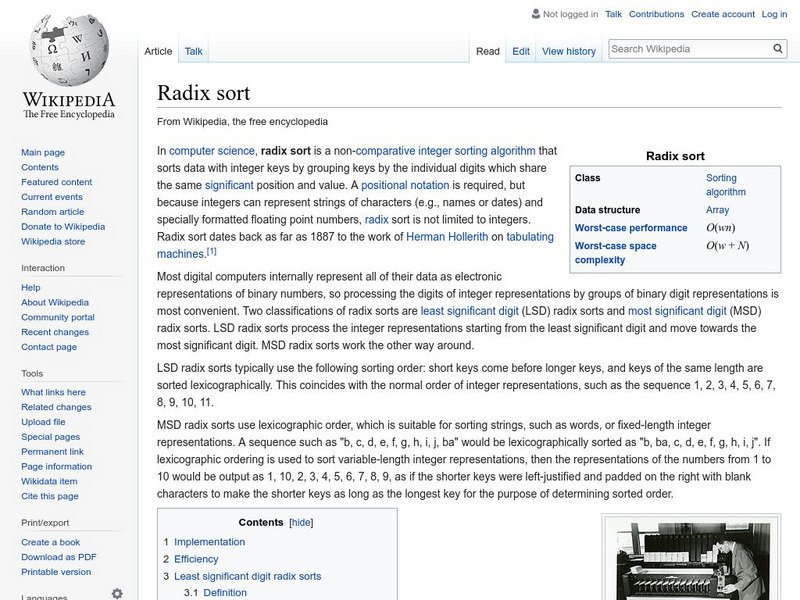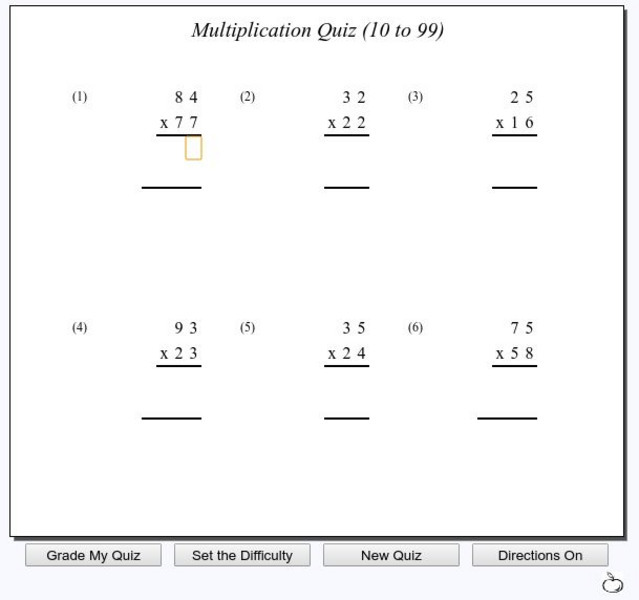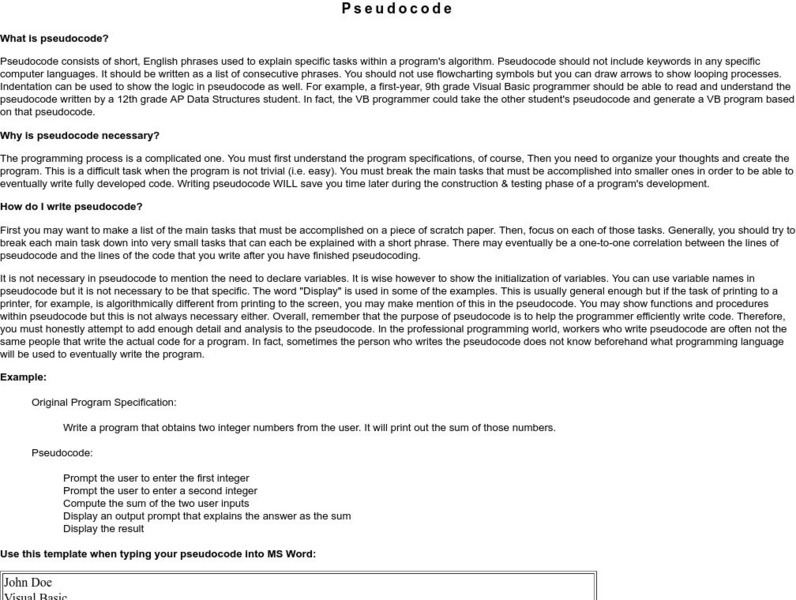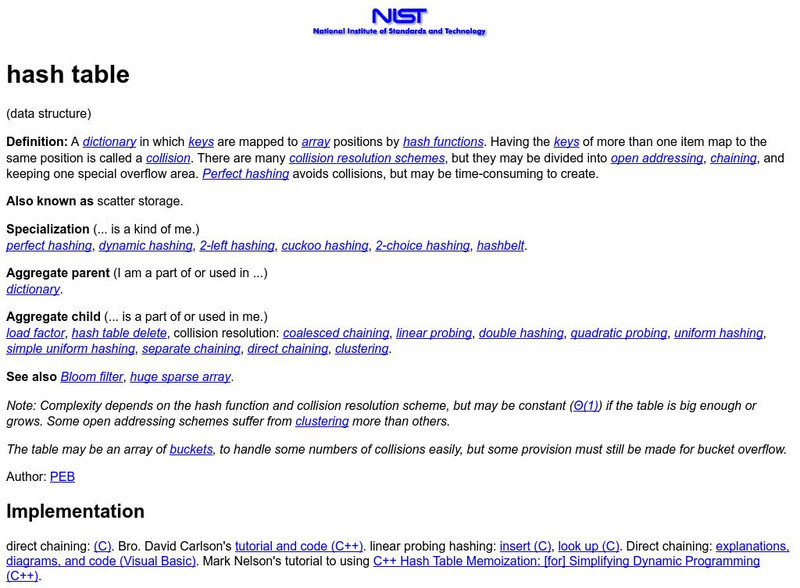Hi, what do you want to do?
Calculator Soup
Calculator Soup: Long Multiplication Calculator
Multiplication of positive or negative whole numbers or decimal numbers as the multiplicand and multiplier to calculate the product using long multiplication. The solution shows the work for the Standard Algorithm.
Wikimedia
Wikipedia: Big O Notation
A Wikipedia description of the algorithm efficiency measurement known as Big-O.
Wikimedia
Wikipedia: Pseudocode
A Wikipedia description of the algorithm design language known as pseudocode.
Mr. Martini's Classroom
Mr. Martini's Classroom: Long Multiplication Quiz
Students are challenged to multiply two, three, and four-digit numbers using the standard multiplication algorithm. They can set the number of digits in the multipliers, choose to have their quiz graded, or select new problems.
Other
Minich: Pseudocode
A concise explanation of the algorithm design language known as pseudocode.
ClassFlow
Class Flow: Metric System
[Free Registration/Login Required] This is a supplemental metric system flipchart I used with my students to reinforce previous classroom discussions. It contains an algorithm we developed in class, as well as, several practice problems...
National Institute of Standards and Technology (NIST)
Dictionary of Algorithms and Data Structures: Linked List
A description of the linked list data structure.
National Institute of Standards and Technology (NIST)
Dictionary of Algorithms and Data Structures: Array
The definition of an array data structure with links to array subtopics.
National Institute of Standards and Technology (NIST)
Dictionary of Algorithms and Data Structures: Heap
The DADS definition of the heap abstract data type.
National Institute of Standards and Technology (NIST)
Dictionary of Algorithms and Data Structures: Stack
The DADS description of the stack data structure.
National Institute of Standards and Technology (NIST)
Dictionary of Algorithms and Data Structures: Binary Tree
The DADS description of the binary tree abstract data structure.
National Institute of Standards and Technology (NIST)
Dictionary of Algorithms and Data Structures: Set
The DADS description of the set abstract data type.
National Institute of Standards and Technology (NIST)
Dictionary of Algorithms and Data Structures: Hash Table
A description of the hash table data structure.
National Institute of Standards and Technology (NIST)
Dictionary of Algorithms and Data Structures: Abstract Data Type
The DADS description of the dictionary abstract data type.
National Council of Teachers of Mathematics
Nctm: Figure This: Monday's Child
Do you know what day of the week were you born? You can find the exact day when you try this math challenge that explores problem solving with algorithms. Find out how scientist and statisticians use algorithms in their jobs. A one page...
Other
Intersecting Convex Polygons the Algorithm
This site talks about how to check for the intersection of polygons. Computer programs calculating intersections are presented.
Khan Academy
Khan Academy: Challenge: Is a String a Palindrome?
Practice problems involving recursive algorithms.
Khan Academy
Khan Academy: Selection Sort Pseudocode
An overview of the algorithm selection sort is given.
Khan Academy
Khan Academy: Route Finding
Recognition of the importance of algorithms in everyday life is illustrated.
Other popular searches
- Numerical Algorithms
- Division Algorithm
- Multiplication Algorithms
- Addition With Algorithms
- Addition Algorithms
- Subtraction Algorithms
- Standard Algorithm
- Math With Algorithms
- Partial Products Algorithm
- Partial Sums Algorithm
- Adding Integers Algorithm
- Dividing Algorithm






